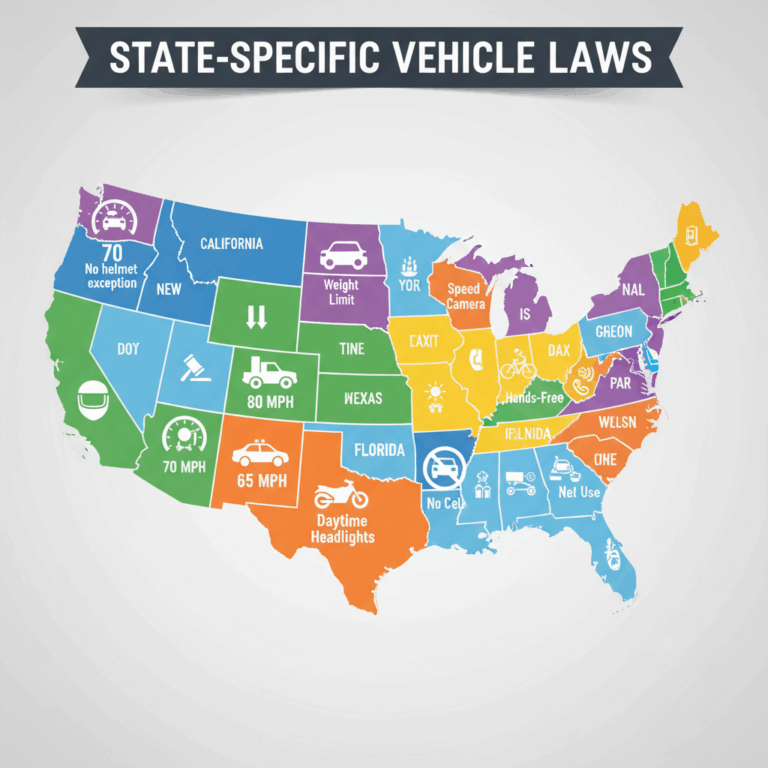Vehicle Inspection Requirements by State
Vehicle inspection laws vary widely across states, causing confusion for drivers traveling interstate. Some states require regular inspections, while others have little to no requirements.
Understanding these rules helps ensure compliance with regulations and maintains vehicle safety standards according to local laws. Each state’s approach reflects regional priorities and conditions.
States with Mandatory Annual Inspections
Certain states, like Pennsylvania, mandate annual vehicle inspections to ensure safety and emission standards are met. These inspections help identify mechanical issues early.
In addition to safety, some states focus on environmental concerns, requiring emissions testing as part of their annual inspections. Compliance is crucial to avoid penalties.
These requirements usually apply to most passenger vehicles, with inspections conducted at authorized stations. Staying informed about timing and specific rules is essential for drivers.
States Without Passenger Vehicle Inspection
Some states, such as South Carolina, do not require any periodic inspections for passenger vehicles, simplifying ownership responsibilities. This reduces the cost and effort related to vehicle maintenance compliance.
However, certain urban areas or heavier vehicles might still have inspection rules in other states like Oregon and Rhode Island. It’s important to verify local rules when traveling.
License Plate Regulations Across States
License plate requirements differ widely among states, affecting how vehicles must display plates for legal operation. Knowing these differences helps drivers avoid fines.
States regulate whether one or two plates are necessary on passenger vehicles, reflecting local law enforcement priorities and vehicle identification methods.
States Requiring Front and Rear Plates
Currently, 29 states mandate that passenger vehicles display both front and rear license plates. This aids in vehicle identification from all angles by law enforcement and cameras.
Examples include New York, Illinois, and Pennsylvania. These states emphasize visibility and enforcement when requiring dual plates, improving compliance and public safety.
Failing to display both plates where required can result in fines or penalties, emphasizing the importance of observing state-specific vehicle laws.
States Requiring Only Rear Plates
In contrast, 22 states require just a rear license plate on most passenger vehicles. This rule simplifies vehicle aesthetics and maintenance by eliminating the front plate.
States like Florida, Texas, and Arizona follow this standard. While reducing front-end damage risks, it may limit front vehicle identification for law enforcement.
Drivers in these states must ensure that rear plates are clearly visible and maintained to comply fully with legal requirements.
Exceptions for Specific Vehicle Types
Certain vehicle types have unique license plate requirements or exceptions. Motorcycles typically require only a rear plate across all states due to design limitations.
Historic or classic cars in some states may be exempt from front plate rules, reflecting their collector status and limited use. Commercial vehicles also follow different regulations.
Interesting Exception Note
Some states allow exemptions for vehicles primarily driven off-road or used in specific industries, highlighting how plate rules accommodate diverse vehicle uses.
Speed Limits and Traffic Laws Variation
Speed limits and traffic regulations in the US vary significantly by state, reflecting regional safety priorities and road conditions. Drivers must adapt to these changes when crossing state lines.
Understanding these differences is essential for legal compliance and maintaining safety on the roads, as penalties for violations can be severe and states enforce their laws strictly.
State-Defined Speed Limits
Each state sets its own speed limits, which can differ based on road type, weather, and urban versus rural areas. These variations require drivers to pay close attention to posted signs.
For example, highways in some states allow speeds up to 75 mph, while others cap limits lower to enhance safety. Adjusting speed accordingly helps avoid tickets and accidents.
Limits are often stricter in school zones, construction areas, and heavily populated regions. Knowing specific speed rules for each area protects drivers and pedestrians alike.
Differences in Mobile Phone Usage Laws While Driving
Mobile phone regulations while driving differ by state, ranging from complete bans on hand-held devices to allowing hands-free usage. Awareness of these rules reduces accident risk.
Many states prohibit texting and calling on hand-held phones, promoting hands-free technology to keep drivers focused. Violation of these laws can lead to fines and points on licenses.
Some states enforce stricter laws for novice drivers or commercial vehicle operators. Checking local rules helps ensure legal compliance and promotes attentive driving habits.
Importance of Understanding State-Specific Laws
Knowing the specific vehicle laws of each state is essential for all drivers, especially those who travel frequently across state lines. These laws can differ greatly, impacting legal compliance.
Being well-informed about local regulations helps drivers avoid unexpected fines and penalties that arise from unintentional violations of state-specific vehicle laws.
Avoiding Fines Through Law Awareness
Each state enforces unique rules related to inspections, registrations, and traffic laws. Drivers unaware of these differences risk receiving costly fines or citations while traveling.
Staying updated on vehicle laws before entering a new state ensures compliance and reduces the chance of legal troubles. This precaution supports hassle-free travel.
Online resources and state transportation websites are valuable tools that provide the latest regulations, helping drivers prepare accordingly to avoid penalties.
Promoting Safe Driving Across States
Understanding different state laws also promotes overall road safety. Adhering to varying speed limits and mobile phone restrictions reduces the risk of accidents.
Respecting local vehicle inspection and equipment standards ensures that vehicles remain safe and roadworthy regardless of the state, benefiting all road users.
Drivers who adapt to diverse traffic laws across states contribute to safer driving environments, protecting themselves and others during interstate travel.







